Goyder, D.J. 2009. A synopsis of Asclepias (Apocynaceae: Asclepiadoideae) in tropical Africa. Kew Bulletin 64: 369–399.
Asclepias L.
Family:
Common names: milkweed (Eng.); melkbos (Afr.)
Plant Attributes:
Plant Type:
SA Distribution:
Soil type:
Flowering season:
PH:
Flower colour:
Aspect:
Gardening skill:
Special Features:
Horticultural zones
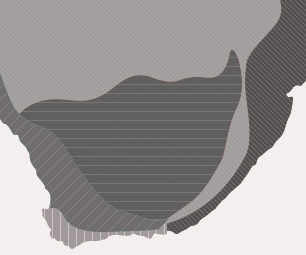
Asclepias L.
Family:
Common names: milkweed (Eng.); melkbos (Afr.)
Species
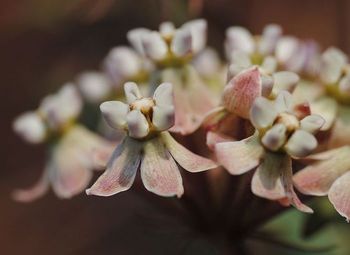
Asclepias adscendens (Schltr.) Schltr.
Conservation status: Least Concern (LC).
Perennial herb, 100–200 mm tall. Leaves linear-lanceolate to ovate; umbels solitary and terminal with 12–15 flowers. Peduncles 5–65 mm long. Corolla lobes reflexed or spreading reflexed with upcurved tips. Flowers white to pinkish or purplish. Plants flower in spring to early summer (August to December); in grassland. Widely distributed in Lesotho, Mozambique, South Africa (Free State, Gauteng, KwaZulu-Natal, Limpopo, Mpumalanga and North West Provinces); also Eswatini and Zimbabwe.
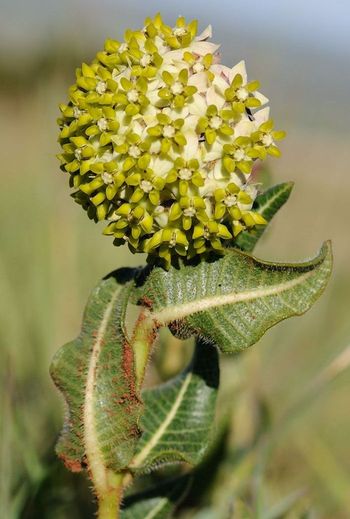
Asclepias albens (E.Mey.) Schltr.
Common names: cartwheels (Eng.); tshalale (TshiVenda).
Conservation status: Least Concern (LC).
Perennial erect or decumbent herb, 250–500 mm tall, unbranched or branched at the base. Leaves ovate to ovate-lanceolate, base subcordade to broadly rounded, bristly hairy on both sides. Umbels solitary, terminal, robust (up to 80 mm in diam.) with 15–30 flowers. Peduncles 40–100 mm long. Corolla lobes reflexed, glabrous inside. Flowers white or light purple or pinkish. Plants flower in midsummer (December to January) and grow in grassland. The young leaves are eaten as a spinach. Widely distributed in the eastern part of southern Africa in Lesotho, South Africa (Eastern Cape, Free State, Gauteng, KwaZulu-Natal, Limpopo, Mpumalanga and North West Provinces); also Eswatini.
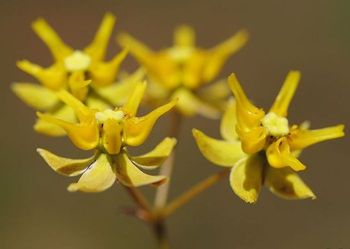
Asclepias aurea (Schltr.) Schltr.
Conservation status: Least Concern (LC).
Perennial herb, 140–500 mm tall. Leaves long and linear, glabrous; umbels axillary and terminal, usually with 4 (rarely 5–8) flowers. Relatively long scapose peduncles 40–140 mm long. Corolla lobes reflexed or spreading, canescent inside. Flowers yellow or white; corona white, yellow or purple with white sides; flowers in spring to autumn (August to May); grows on grassy slopes or rocky hillsides. Used medicinally as an emetic.

Asclepias brevipes (Schltr.) Schltr.
Common name: bokhorinkie (Afr.).
Conservation status: Least Concern (LC).
Perennial decumbent herb; leaves linear, scabrous. Umbels terminal and axillary, usually with 4 flowers; peduncle 10–50 mm long; corolla lobes spreading, canescent inside, pubescent outside. Flowers yellow-brown tinted white or green; corona reddish brown, purple or white; flowers in spring to early summer (September to December). Usually found in burnt veld on hillsides. Restricted to the northern parts of South Africa (Gauteng, KwaZulu-Natal, Limpopo, Mpumalanga and North West Provinces).
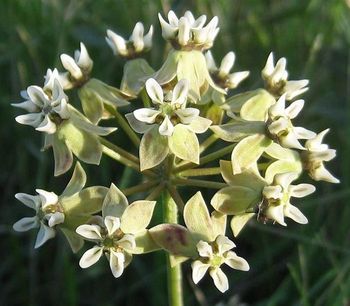
Asclepias crispa P.J.Bergius var. crispa.
Common name: bitterwortel (Afr.).
Conservation status: Least Concern (LC).
Perennial herb 150–400 mm tall; leaves crisped-wavy, linear to lanceolate, truncate, rounded or cuneate at base; scabrous or pubescent. Umbels solitary, terminal or 2–4 racemosely arranged, pedunculated, with 7–40 flowers; corolla lobes reflexed, glabrous on both sides or pubescent outside. Flowers dull green or purplish tinted inside, brown purplish outside; corona greenish or with purple outer margin. Usually flowers in September. Decoctions or infusions of the root is used as a diuretic and purgative medicine. Reported to be toxic to livestock.
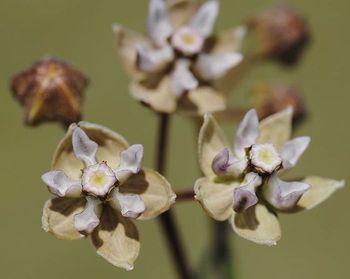
Asclepias cucullata (Schltr.) Schltr. subsp. cucullata.
Conservation status: Least Concern (LC).
Perennial herb, erect to decumbent. Leaves linear to narrowly lanceolate; corolla lobes spreading with tips curving up; scabrous to pubescent outside, canescent inside. Corona lobes erect, shorter than or only slightly exceeding the staminal column, cucullate part of corona lobes ± as long as broad. Flowers purple or mauve, white to grey. Plants usually flower in spring to early summer (September to December). Grows in open mountain grassland. Mainly along the southern Cape coast but also other parts of South Africa (, Gauteng, Mpumalanga and Eastern and Western Cape Provinces); also Eswatini.
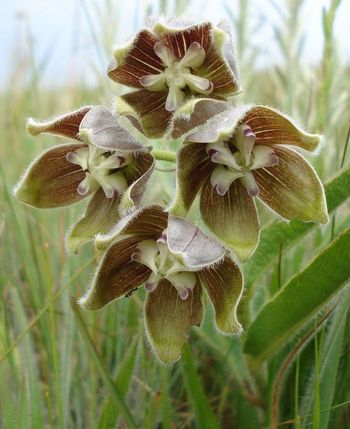
Asclepias cultriformis (Harv. ex Schltr.) Schltr.
Conservation status: Least Concern (LC).
Perennial herb 150–300 mm tall. Leaves oblong, lanceolate or ovate-lanceolate. Corolla lobes ascending-spreading, pubescent outside, pubescent to densely white-hairy at tips and along margins, glabrous inside. Corona lobes with compressed, erect processes or horn within cavity. Flowers green or dark purple-brown; corona white with violet spot on back near apex and violet at base. Plants flowers December to February. Grows in grassland. Distributed in Lesotho, South Africa (Eastern Cape, Gauteng, KwaZulu-Natal, Limpopo and Mpumalanga Provinces); also Eswatini.
Plant Attributes:
Plant Type:
SA Distribution:
Soil type:
Flowering season:
PH:
Flower colour:
Aspect:
Gardening skill:
Special Features:
Horticultural zones







Rate this article
Article well written and informative
Rate this plant
Is this an interesting plant?
Login to add your Comment
Back to topNot registered yet? Click here to register.